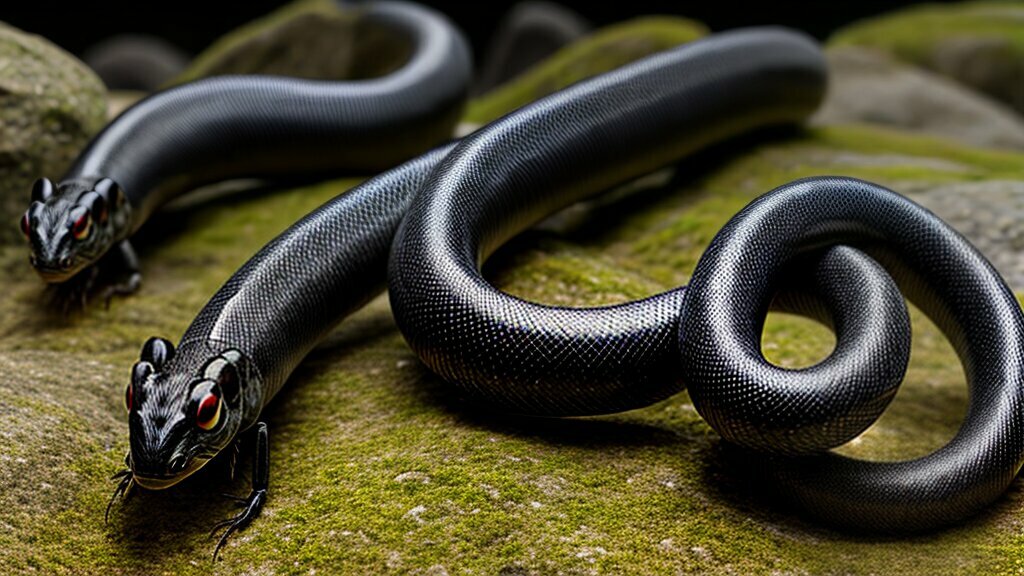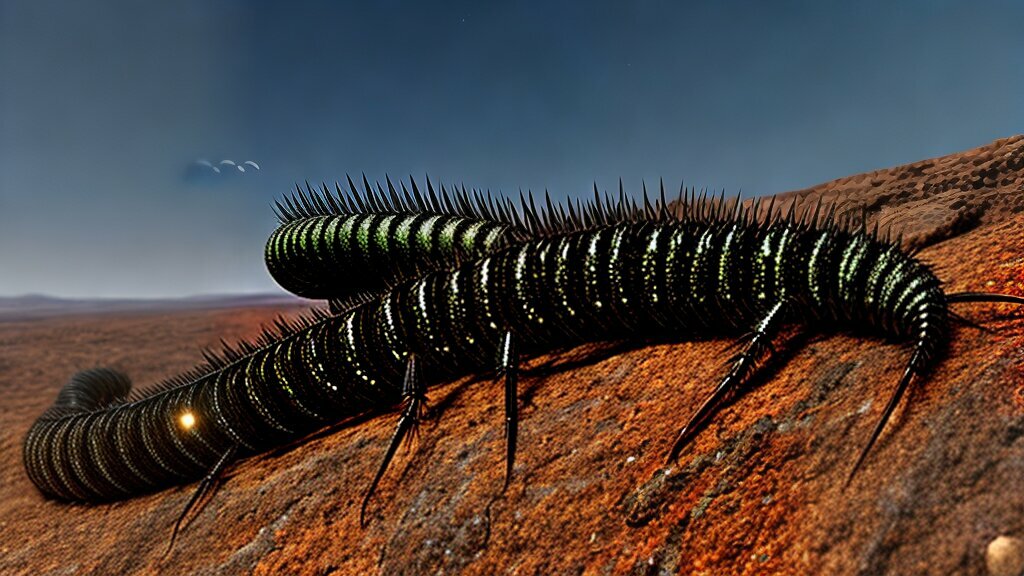In the vast world of insects and arthropods, centipedes are one of the most fascinating creatures due to their exceptional ability to adapt to different environments. One of the most exceptional adaptations of centipedes is their ability to survive without oxygen.
This article will focus on exploring the mechanisms that allow centipedes to live without oxygen and how they can survive for extended periods of time in low-oxygen environments. We will take a scientific approach to uncovering the secrets of these fascinating creatures and provide insight into what makes them so remarkable.
Key Takeaways:
- Centipedes have the ability to survive without oxygen for extended periods of time.
- The respiratory system of centipedes is highly adaptable and allows them to survive in low-oxygen environments.
- External factors and species differences can affect the ability of centipedes to survive without oxygen.
- Observations and studies have been conducted to better understand the unique adaptability of centipedes.
Centipede Respiration and Adaptability to Low-Oxygen Environments
Centipedes are fascinating creatures with unique adaptations that enable them to survive in various environments. One of their most remarkable abilities is their adaptability to low-oxygen environments, which allows them to thrive in places where other organisms cannot survive.
The respiratory system of centipedes is optimized for survival in low-oxygen environments. Instead of using lungs, centipedes have spiracles, which are small openings on the lateral sides of the body that allow air to enter and exit. These spiracles are connected to a series of internal tubes that transport oxygen to all parts of the body.
Centipedes are able to adapt to low-oxygen environments through a process known as anaerobiosis. Anaerobiosis is a metabolic process that occurs in the absence of oxygen and enables centipedes to obtain energy from alternative sources. During anaerobiosis, the body of the centipede uses stored glycogen as an energy source. This process produces lactic acid as a by-product, which can lead to a reduction in muscle function and eventually, death.
However, centipedes have developed unique mechanisms to counteract the effects of anaerobiosis. For example, some species of centipedes can tolerate high levels of lactic acid in their bodies, which enables them to survive for longer periods without oxygen. Additionally, some centipedes are able to enter a state of suspended animation known as diapause, which allows them to conserve energy and slow down their metabolism until oxygen becomes available again.
The adaptability of centipedes to low-oxygen environments has been a subject of study for many years. Researchers have found that certain species of centipedes are able to survive for up to 24 hours without oxygen, while others can survive for even longer periods. This remarkable ability has led some scientists to explore the potential of centipede adaptations for use in medical research.
“Centipedes have developed unique mechanisms to counteract the effects of anaerobiosis.”
In conclusion, the ability of centipedes to survive in low-oxygen environments is a testament to their remarkable adaptability and resilience. Their respiratory system and unique mechanisms for surviving without oxygen have enabled them to thrive in some of the most inhospitable environments on the planet. Understanding the adaptations of centipedes may provide valuable insights for medical research and the development of new technologies.
The Science Behind Centipede Survival Mechanisms
Despite the importance of oxygen for most organisms, some creatures, like centipedes, have developed unique strategies to survive without it. Centipedes are able to subsist in low-oxygen environments by slowing down their metabolism and using anaerobic respiration.
While oxygen is a crucial component in the process of respiration, centipedes are able to tap into alternative sources of energy when it is unavailable. In low-oxygen conditions, centipedes switch to anaerobic respiration, which allows them to obtain energy without the need for oxygen. During this process, glucose is broken down into energy and lactic acid, which accumulates in the body. To avoid damage from this buildup, centipedes have specialized mechanisms to remove excess lactic acid from their systems.
Furthermore, centipedes have unique respiratory structures that enable them to extract as much oxygen as possible from their environment. Their respiratory tracheae are extremely efficient, with numerous small tubes that ensure a high rate of oxygen diffusion. Additionally, some species of centipedes are able to modify their respiratory structures in response to changing oxygen conditions, allowing them to remain alive even in severely low-oxygen environments.
Research suggests that centipedes are better equipped to survive in low-oxygen environments than previously thought. In one study, researchers found that centipedes were able to survive for up to 24 hours in environments with no oxygen. However, this ability to survive without oxygen is limited, and prolonged exposure to anoxic conditions can result in the death of centipedes.
Factors Affecting Centipede Survival Without Oxygen
Centipedes are known for their remarkable ability to survive in low-oxygen environments, but their tolerance levels may vary between species and are influenced by external factors.
| Species | Tolerance to Low-Oxygen Environments |
|---|---|
| Scolopendra gigantea | Can survive up to 7 hours without oxygen |
| Geophilus | Can survive up to 36 hours without oxygen |
| Strigamia | Can only survive a few hours without oxygen |
Factors that can affect centipede survival without oxygen include temperature, humidity, and the availability of other resources such as food and water. Centipedes in cooler environments may have a higher tolerance to low-oxygen environments, while those in warmer environments may require more oxygen to sustain themselves. Similarly, a lack of moisture can hinder centipede respiration and reduce their ability to survive without oxygen.
In conclusion, while centipedes have remarkable adaptability to low-oxygen environments, their survival without oxygen is influenced by various factors. Understanding these factors can provide valuable insights into the behavior and ecology of these fascinating creatures.
Observations and Studies on Centipedes in Low-Oxygen Environments
Studies have shown that centipedes possess a remarkable ability to survive in low-oxygen environments. While oxygen is essential for most living organisms, centipedes have adapted to thrive in conditions with limited oxygen availability.
Research has indicated that some species of centipedes, such as the soil centipede, are capable of surviving for up to several days without oxygen. This is due to their unique respiratory system that enables them to obtain and utilize oxygen more efficiently than other organisms.
One study conducted on the common house centipede (Scutigera coleoptrata) found that they were able to survive for up to 12 hours in an oxygen-free environment. The study also revealed that the centipedes were able to maintain their body movements during this period, showing no signs of distress or discomfort.
Another study tested the effects of low-oxygen environments on the growth and development of centipede embryos. The study found that the embryos were able to survive for up to five days in an oxygen-free environment, with no adverse effects on their growth or development.
It is important to note that while centipedes may be able to survive without oxygen for extended periods of time, this does not mean that they do not require oxygen to live. Centipedes still rely on oxygen for their metabolic processes, but their unique respiratory system allows them to adapt to low-oxygen environments and survive in conditions where other organisms would perish.
In light of these observations and studies, it is clear that centipedes possess a remarkable ability to survive in low-oxygen environments. While there is still much to be learned about these fascinating creatures, their adaptability to extreme conditions serves as a testament to their resilience and tenacity.
Conclusion
In conclusion, the ability of centipedes to survive without oxygen is truly remarkable. These arthropods have adapted to low-oxygen environments through various mechanisms, including anaerobic respiration and the utilization of alternative respiratory structures. While the level of tolerance to low-oxygen conditions may vary between species, it is clear that centipedes possess unique survival mechanisms that enable them to thrive in environments where oxygen is limited.
The science behind the respiration process of centipedes in low-oxygen environments is complex and fascinating. Even with the knowledge we currently possess, there is still much to learn about how these creatures are able to sustain themselves without sufficient oxygen.
Keep learning
If you’re interested in learning more about the biology of centipedes and other fascinating arthropods, there are many resources available online and in print. By continuing to explore the intricacies of these creatures, we can gain a greater appreciation for the diversity of life on our planet and the remarkable adaptations that enable species to survive and thrive in a wide range of environments.
FAQ
Q: How long can centipedes live without oxygen?
A: Centipedes have a remarkable ability to survive without oxygen for extended periods of time. While the exact duration can vary depending on the species and environmental conditions, some centipedes have been known to survive for up to several hours or even days without access to oxygen.
Q: How do centipedes respire and adapt to low-oxygen environments?
A: Centipedes have a unique respiratory system that allows them to adapt and survive in low-oxygen environments. They have specialized structures called spiracles, which are small openings on their body that lead to a network of tubes called tracheae. Through these tracheae, centipedes can extract oxygen from the air and deliver it to their cells, enabling them to continue functioning even in environments with limited oxygen availability.
Q: What is the science behind centipede survival mechanisms in low-oxygen environments?
A: Centipedes rely on a process called spiracular pumping to efficiently extract oxygen from the air. When in low-oxygen environments, they can increase the frequency of pumping air in and out of their spiracles to maximize oxygen intake. Additionally, centipedes have evolved to have a higher tolerance for low-oxygen conditions, allowing them to sustain themselves for longer periods without oxygen.
Q: What factors affect centipede survival without oxygen?
A: The ability of centipedes to survive without oxygen can be influenced by various factors. Different species of centipedes may have varying tolerance levels to low-oxygen conditions. Additionally, external factors such as temperature, humidity, and the availability of alternative oxygen sources can also impact their ability to survive without oxygen.
Q: Are there any studies on centipedes in low-oxygen environments?
A: Scientists have conducted observations and studies on centipedes in low-oxygen environments to understand their survival mechanisms. These studies have provided valuable insights into the unique adaptations and behaviors exhibited by centipedes when faced with oxygen deprivation. While centipedes do require oxygen to survive, they possess incredible adaptations that allow them to withstand prolonged periods of oxygen deprivation.





